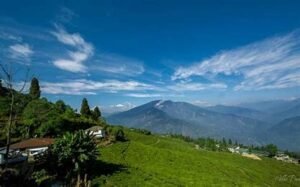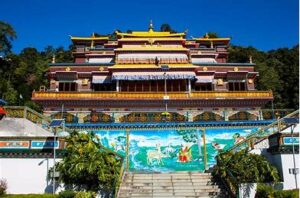Sajibu Nongma Panba – Traditional Meitei Lunar New Year Celebration
Introduction
Sajibu Nongma Panba, also known as Meitei Cheiraoba, marks the traditional New Year of the Meitei community of Manipur. This festival follows the lunar calendar and is celebrated on the first day of the month of Sajibu, which usually falls in March or April. It is a time for renewal, purification, and reflection. Families clean their homes, prepare special dishes, and offer prayers for prosperity and happiness. Traditionally, this festival also serves as a period for self-assessment, where people look back at the past year and prepare themselves for the year ahead.
Historical Roots
The origins of Sajibu Nongma Panba trace back to ancient Meitei traditions and rituals. The Meitei people, who have lived in the valleys of Manipur for centuries, have long celebrated this festival as a way to honor their deities and mark the beginning of a new cycle. Historically, it was also a time when the king would observe rituals to ensure the well-being of the kingdom. According to historical records, kings of Manipur performed specific rites to appease deities and ensure the welfare of their people. It is believed that these rituals were aimed at invoking divine blessings for a prosperous and harmonious reign. The festival, over time, became an occasion for communal gatherings, cultural expression, and reaffirmation of identity.
Language and Communication
The Meitei language, also known as Manipuri, plays a vital role in the celebration of Sajibu Nongma Panba. Rituals and prayers are conducted in the native tongue, preserving linguistic traditions. Oral recitations, poems, and folk songs are often performed, emphasizing the cultural identity of the Meitei people. Language serves as a medium through which age-old customs and beliefs are transmitted across generations. Many cultural expressions, such as the chanting of traditional hymns and the recitation of historical events, contribute to keeping the language vibrant and relevant.
Festivals and Celebrations
Sajibu Nongma Panba is a time of joy and togetherness. Families gather, clean their homes, and prepare traditional dishes. Offerings are made to the gods, and elders share blessings with younger members of the family. A unique aspect of the festival is climbing hilltops, symbolizing the overcoming of life’s challenges and praying for good fortune. The ritual of hill climbing, often carried out by entire families, also signifies one’s effort to rise above obstacles and achieve spiritual elevation. Additionally, homes are meticulously cleaned and sometimes renovated before the festival to ensure that only good fortune enters the household.
Arts, Crafts, and Music
During Sajibu Nongma Panba, traditional arts and crafts are displayed and celebrated. Music and dance, especially classical Manipuri dance, are performed to honor the deities and ancestors. Handcrafted items and traditional attire are also prominent during the festival. Artisans showcase their skills through textiles, pottery, and woodcraft, all of which reflect the cultural heritage of the Meitei people. Music and dance performances are not just forms of entertainment but are seen as offerings to the divine, expressing gratitude and devotion.
Cuisine and Culinary Traditions
Food plays a central role in Sajibu Nongma Panba. Special dishes like Eromba (a vegetable and fish chutney), Chamthong (a vegetable stew), and Chahao Kheer (black rice pudding) are prepared. These dishes reflect the agricultural traditions and culinary skills of the Meitei people. The preparation of food during the festival is an elaborate process involving family members, fostering unity and cooperation. Additionally, the choice of ingredients often holds symbolic meaning, representing fertility, prosperity, and good health.
Attire and Ornamentation
Traditional attire is worn during the festival, with men donning dhotis and women wearing beautiful phaneks and innaphis. These garments are often intricately designed and showcase the rich textile heritage of Manipur. The colorful and elegant designs reflect the artistic sensibilities of the Meitei community. Wearing traditional attire during Sajibu Nongma Panba is not only a matter of fashion but also a symbol of cultural pride and continuity.
Beliefs and Values
Sajibu Nongma Panba reflects the deep spiritual beliefs of the Meitei people. It is a time to honor ancestors, seek blessings, and renew one’s connection to nature. Respect for elders, hospitality, and community welfare are core values upheld during the celebration. The festival emphasizes humility, gratitude, and compassion. These values are reflected in rituals aimed at purifying the mind and soul, reinforcing a sense of interconnectedness with both the community and the natural world.
Customs and Etiquette
Etiquette during Sajibu Nongma Panba emphasizes respect, humility, and kindness. Younger members of the family seek blessings from elders. Ritual cleanliness and purification are essential, reflecting the desire for a fresh start and spiritual growth. Observing proper customs during the festival is considered an expression of devotion and cultural identity.
Architecture and Symbols
Traditional Meitei architecture and symbols also play a role in the celebrations. Homes are decorated, and specific motifs are used to signify prosperity and protection. The traditional Meitei house, with its unique design and structure, reflects the harmony between people and their environment. The architecture of temples and homes alike reveals the deep spiritual connection between the Meitei people and their cultural beliefs.
Oral Traditions and Storytelling
Oral traditions remain strong within the Meitei community. During Sajibu Nongma Panba, elders often recount stories of ancestors, local legends, and historical events. These narratives preserve cultural knowledge and pass it down to younger generations. Storytelling also serves as a means to educate children about moral values, bravery, and resilience.
Interactions with Nature
The festival emphasizes harmony with nature. Rituals often involve offerings to deities associated with nature, acknowledging the importance of natural resources and environmental balance. Activities like hill climbing symbolize the connection between people and their natural surroundings. The appreciation for nature is reflected in various aspects of the festival, including the preparation of food from locally sourced ingredients.
Challenges and Preservation
Like many indigenous festivals, Sajibu Nongma Panba faces challenges from modernization and cultural assimilation. Efforts are being made to preserve the festival’s authenticity and ensure that younger generations understand its significance. Cultural organizations and scholars are working to document traditional practices and promote awareness. Education and community initiatives are seen as vital tools for the preservation of these rich traditions.
Contributions to the Broader Region and World
The Meitei culture has contributed richly to art, philosophy, and innovation. Classical Manipuri dance, known for its grace and spiritual depth, has gained recognition worldwide. The community’s weaving techniques and culinary traditions are also appreciated beyond Manipur. These contributions showcase the Meitei community’s creativity, resilience, and ability to adapt while preserving their identity.
Connection to Northeast India
Sajibu Nongma Panba is an integral part of the cultural tapestry of Northeast India. It reflects the unique traditions of the Meitei community while also connecting with broader regional practices. The festival showcases the diversity and richness of Northeast India’s cultural heritage.
Conclusion
Sajibu Nongma Panba is more than just a festival. It is a celebration of identity, renewal, and cultural pride. By preserving these traditions, the Meitei community maintains a strong connection to its roots while contributing to the cultural diversity of India and the world.




